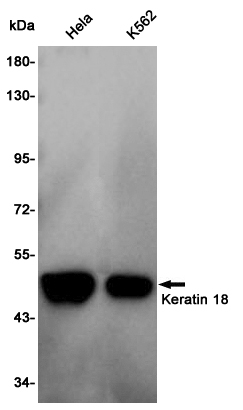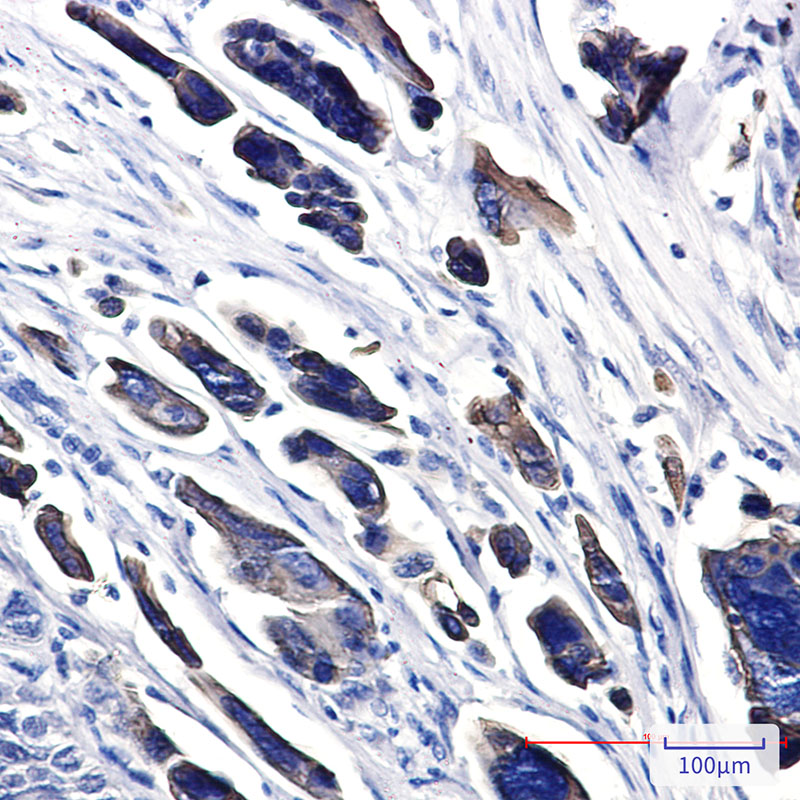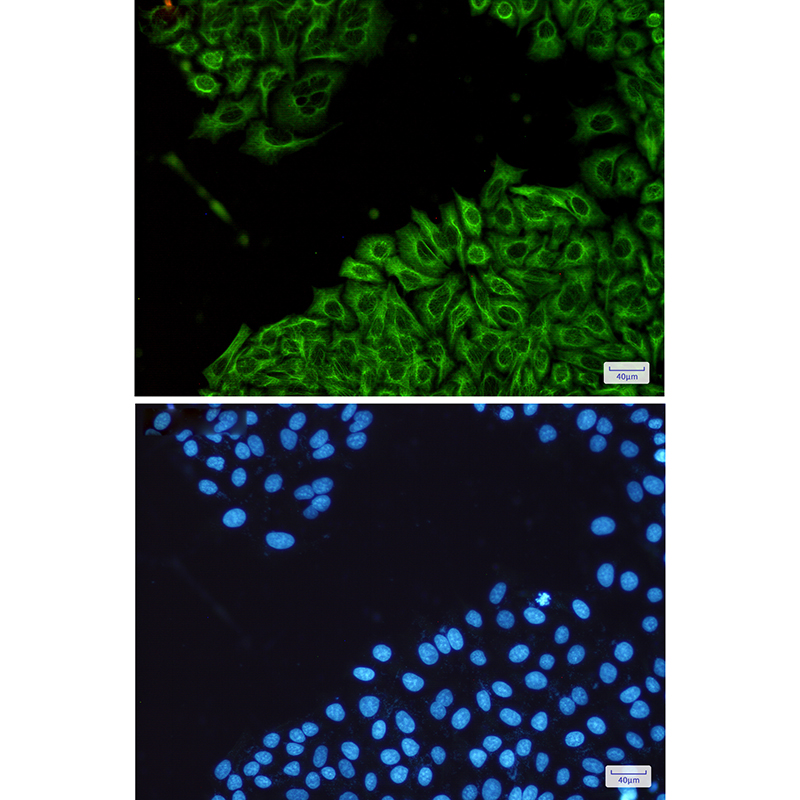


| WB | 咨询技术 | Human,Mouse,Rat |
| IF | 咨询技术 | Human,Mouse,Rat |
| IHC | 1/10-1/50 | Human,Mouse,Rat |
| ICC | 技术咨询 | Human,Mouse,Rat |
| FCM | 咨询技术 | Human,Mouse,Rat |
| Elisa | 1/5000-1/10000 | Human,Mouse,Rat |
| Aliases | CK18; CYK18; KRT18 |
| Entrez GeneID | 16668 |
| WB Predicted band size | Calculated MW: 48 kDa; Observed MW: 48 kDa |
| Host/Isotype | Rabbit IgG |
| Antibody Type | Primary antibody |
| Storage | Store at 4°C short term. Aliquot and store at -20°C long term. Avoid freeze/thaw cycles. |
| Species Reactivity | Human |
| Immunogen | Recombinant protein of mouse Cytokeratin 18 |
| Formulation | Purified antibody in TBS with 0.05% sodium azide,0.05%BSA and 50% glycerol. |
+ +
以下是关于SPAM1抗体的3-4篇参考文献的简要概括(文献标题与内容为模拟示例,实际文献需通过数据库检索确认):
---
1. **文献名称**:*SPAM1/PH-20 localization in sperm and its role in hyaluronidase activity during fertilization*
**作者**:Cherr G.N. et al.
**摘要**:研究利用SPAM1特异性抗体,通过免疫荧光技术定位SPAM1蛋白在精子顶体区域的表达,证实其透明质酸酶活性对卵子透明带穿透的关键作用,抗体阻断实验显著降低体外受精率。
2. **文献名称**:*Anti-SPAM1 monoclonal antibody inhibits tumor metastasis via targeting hyaluronan degradation*
**作者**:Zhang Y. et al.
**摘要**:开发了一种高亲和力SPAM1单克隆抗体,发现其可通过抑制SPAM1的透明质酸酶活性,减少肿瘤细胞外基质降解,从而在小鼠模型中显著降低乳腺癌细胞的转移潜能。
3. **文献名称**:*SPAM1 as a potential immune contraceptive target: antibody-mediated fertility reduction in primates*
**作者**:Primakoff P. et al.
**摘要**:评估SPAM1抗体在食蟹猴中的避孕效果,发现抗体注射可导致精子活力下降及透明带穿透能力丧失,为非激素避孕策略提供实验依据。
4. **文献名称**:*Expression profiling of SPAM1 in gastric cancer and its correlation with patient prognosis*
**作者**:Li X. et al.
**摘要**:通过免疫组化结合SPAM1抗体,发现SPAM1在胃癌组织中高表达,且与肿瘤分期和患者生存率负相关,提示其作为预后标志物的潜力。
---
建议通过PubMed或Web of Science检索关键词“SPAM1 antibody”“PH-20 antibody”获取真实文献。
The SPAM1 (Sperm Adhesion Molecule 1) antibody targets the SPAM1 protein, also known as PH-20. a glycosylphosphatidylinositol (GPI)-anchored membrane protein primarily associated with sperm function. Discovered in the 1980s, SPAM1/PH-20 is expressed in the testis and localizes to the sperm's acrosomal membrane and plasma membrane. It exhibits hyaluronidase activity, critical for sperm penetration through the hyaluronic acid-rich extracellular matrix of the oocyte during fertilization. This dual enzymatic and adhesion role makes SPAM1 essential for reproductive biology.
SPAM1 antibodies are widely used in research to study sperm maturation, fertilization mechanisms, and infertility. They help detect SPAM1 expression patterns, assess its enzymatic function, and explore its role in pathologies like male infertility or certain cancers where SPAM1 is aberrantly expressed. Monoclonal and polyclonal antibodies against SPAM1 have also been investigated for contraceptive development, aiming to block its hyaluronidase activity or sperm-egg binding.
Additionally, SPAM1's homology with HYAL5 and its presence in somatic tissues (e.g., some tumors) have spurred interest in its oncogenic potential. Antibodies here aid in elucidating SPAM1's involvement in cancer metastasis via hyaluronan degradation. Overall, SPAM1 antibodies serve as vital tools in reproductive health, cancer research, and therapeutic innovation.
×